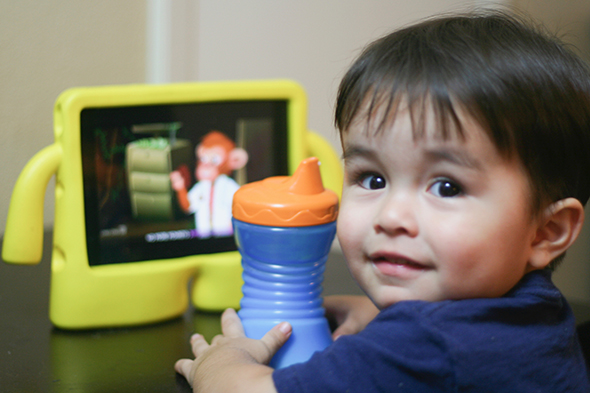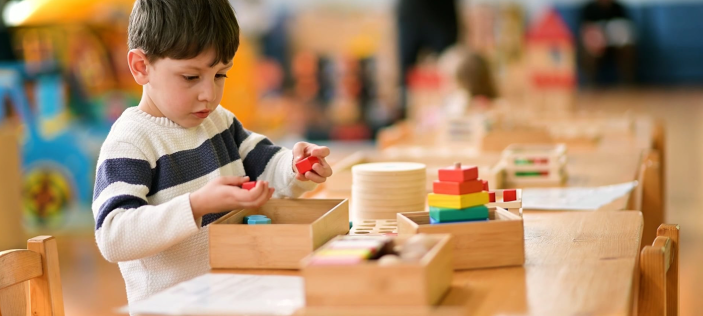Back in February HFL Education hosted their EdTech Showcase, a fantastic event where schools and settings came together to share and learn about the great ways in which they were using technology to support learning. I was asked to be part of a panel to discuss and debate technology, from an Early Years perspective. Now, as I’m sure you’ve read in the media and through various sources, screen time in early years is a hot topic. There is much debate about the pros and cons of using technology with children under 5 years old, but the reoccurring theme is the amount of screen time our children are having.
As we find ourselves embracing new ways of working, the provision of home learning for parents and carers is a tricky one. For those of us who have spent our careers teaching young children we know the very best learning experiences happen through play – but how do we communicate this to parents and carers? What happens when they ask us for work, or apps, or websites?
There are many companies offering free subscriptions, additional learning materials and some great online resources. The Department for Education has recently released a list of approved websites to support home learning. We have spent time reviewing these to find out which ones are most suitable for Early Years and how you can use them with your families to support home learning.

However, I think we need to be mindful of the amount of time our Early Years children are spending on screens. Last April the World Health Organisation published its first ever guidelines on screen time for children under 5 as part of their Physical Activity, Sedentary Behaviour and Sleep Guidelines. They stated that children under 2 years old should have zero hours of screen time (this includes television and films) and children aged between 2 and 5 years old should only have one hour per day of screen time (including television and films). Although, practitioners, parents and carers may feel conflicted as other organisations such as the Royal College of Paediatrics and Child Health and the NHS do not advise specific limits, but do advise that screens should not be accessed one hour before sleep.
It is worth bearing in mind the advice of Professor Andrew Przybylski of the Oxford Internet Institute, a department of the University of Oxford. He says, that what matters is not the screen, but what is happening in front of it and that what might potentially cause harm is the content that children consume and not the amount of time that they spend.1 This is a clear message to us as practitioners and to parents and carers to make sure that we are fully involved in the digital world of our children, so that we can understand it, keep them safe and support them in making healthy choices when it comes to technology use.
So what does that really mean for us in practical terms?
It’s all about the balance
We need to provide a balance of activities for parents and carers that supports their understanding of how children learn through play and how certain apps and websites can complement their learning (rather than being the main part of their learning). We need to consider how we can support parents and carers to interact with their children when using technology, to promote talk and understand their role in guiding learning.
Think about the quality
Let’s think about the quality of the apps and websites we are signposting families to. Have we tested them ourselves? Have we checked the content to see if there is lots of ‘learning by rote’? Are we encouraging parents and carers to be fully involved in the activities we are recommending, again, promoting lots of talk and supporting children’s communication and language development?
What else can we send home?
Are we inadvertently driving a digital divide for those children that don’t have access to computers, laptops or tablets? In line with our early years ethos we want to ensure we are sending home activities that don’t always produce an end product, but allow children to have experiential activities, ‘have a go’ and ‘be creative’. Follow our partner EPIC Early Years on Facebook, providing daily activities to support home learning using items parents and carers already have at home
Underpinning all of this we need to ensure that we are all using technology safely. Don’t forget to continue to share online safety messages with parents and carers through regular newsletters, emails, texts and workshops to ensure their children are using technology safely.
Some key questions you might want to think about with parents and carers with regards to eSafety:
- be mindful of games older children are playing that younger children may be able to see or hear
- do you have parental controls on your devices to ensure children cannot access inappropriate content?
- at times when your children are using technology alone do you have clear boundaries and rules that you all follow as a family?
When our children return to our settings and schools, we need to think about the key skills they will need. A screen will not teach them how to dress themselves, pour their own drinks, use scissors, or interact with others. Whilst technology is going to play a really important part in their lives, we should be mindful of how our communication with parents and carers during this time continues to promote the key skills we need our children to practise, remembering to give great suggestions about how to support the development of these too.
Let’s not forget technology is a wonderful thing. After all, every one of you reading this will be doing so through the power of technology! How we communicate home learning opportunities with our families is through the power of technology, and how we check in with our loved ones is through the power of technology. It absolutely has a rightful place in our lives and in those of our children, but, especially during these times, be mindful of the amount of time both our children and we ourselves are spending on screens.


